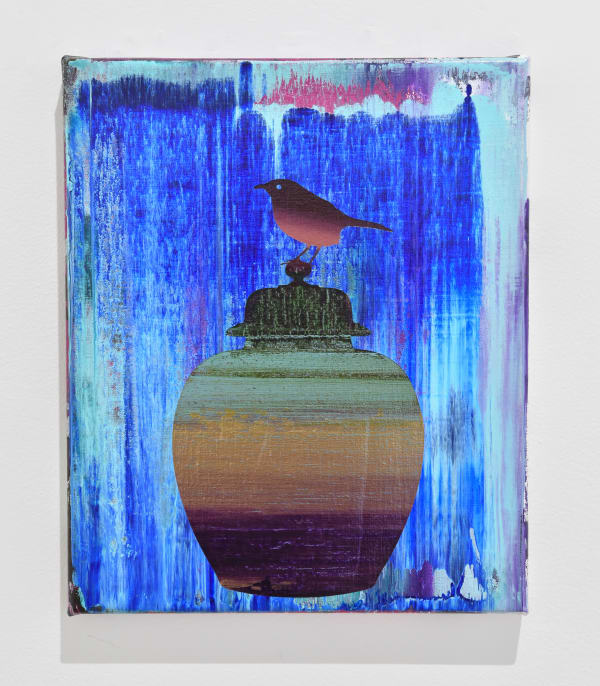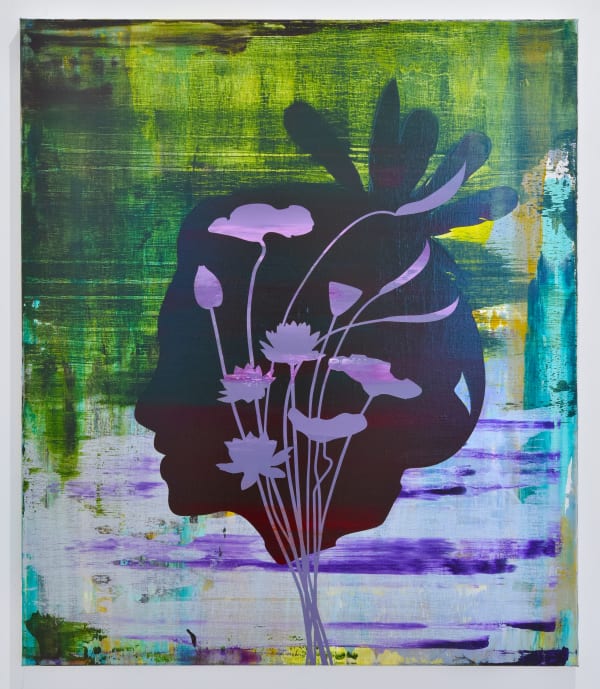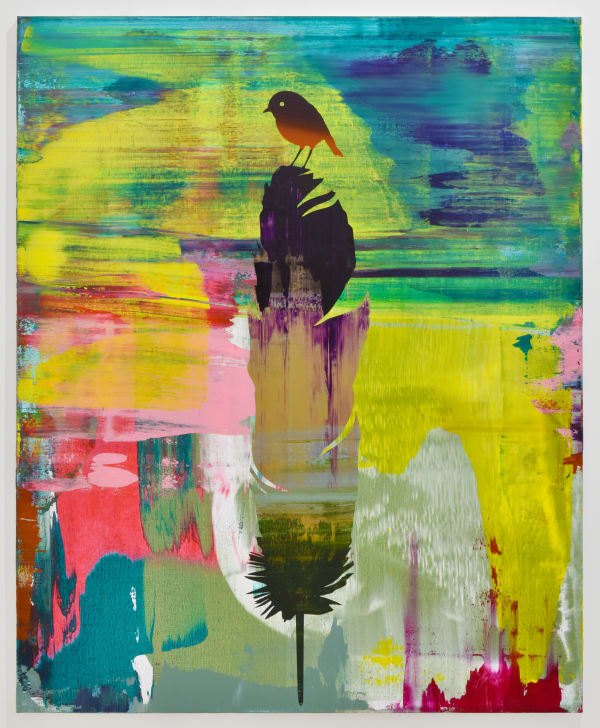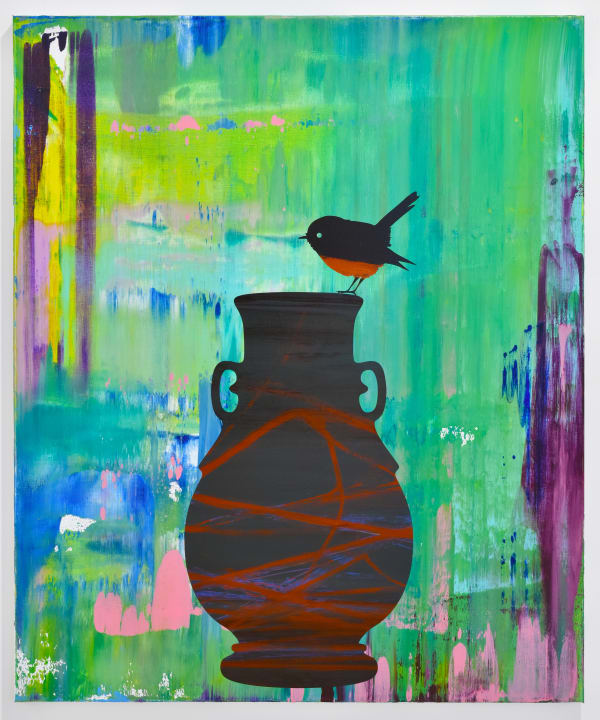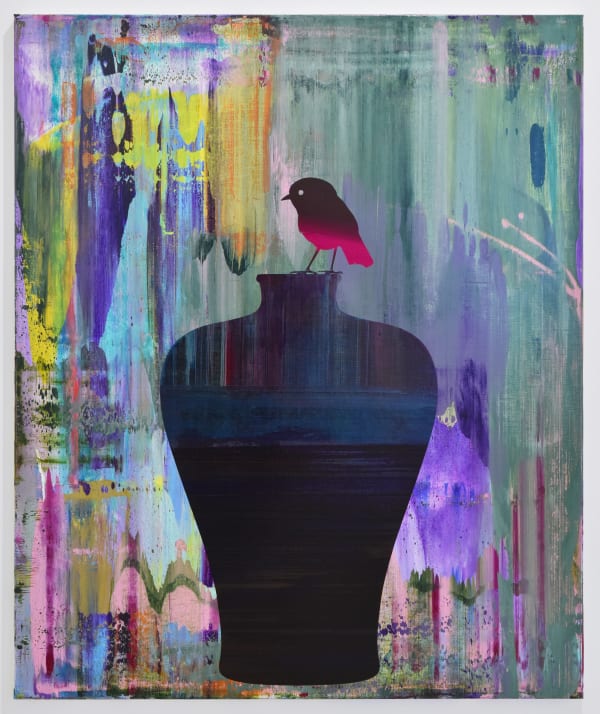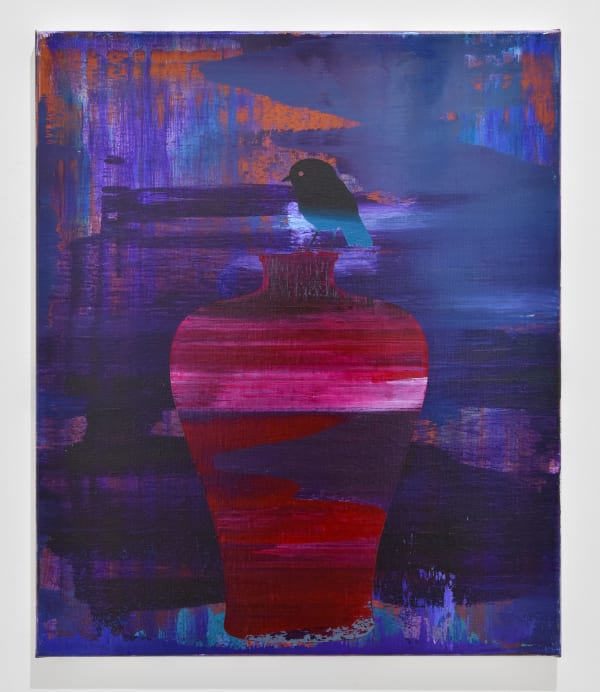The First Days in a Strange New Land: Chris Heaphy
This simultaneous forwards and backwards temporality of Heaphy’s work continues into the present. The image content seems both nostalgic and timeless, the palettes historically informed and attuned to contemporary visual culture. The First Days in a Strange New Land presents a striking selection of iconographic images, sumptuous colour selections, and deft paint handling.
Chris Heaphy has been active as an artist for more than three decades. During that time, he has created a significant body of highly engaging artwork. Visually and conceptually nuanced, his work has examined themes of time, place, and memory. These themes have remained consistent while the artist has moved through several different approaches to image-making.
More recently, Heaphy’s paintings have been comparatively restrained, employing single motifs set amongst visually striking colour fields. The works presented in The First Days in a Strange New Land operate in this more recent pared-back mode. Heaphy employs birds, feathers, vessels, and silhouetted heads in profile as the primary subject matter for these paintings, conjuring a range of associations with local and universal themes, including life, death, the environment, and post-colonial experience.
-
 Chris Heaphy, Follow Your Instinct, 2024
Chris Heaphy, Follow Your Instinct, 2024 -
 Chris Heaphy, The Start of it All, 2023
Chris Heaphy, The Start of it All, 2023 -
 Chris Heaphy, The First Dance, 2023
Chris Heaphy, The First Dance, 2023 -
 Chris Heaphy, Made Up Your Mind, 2023
Chris Heaphy, Made Up Your Mind, 2023 -
 Chris Heaphy, What If This Storm Ends?, 2023
Chris Heaphy, What If This Storm Ends?, 2023 -
 Chris Heaphy, How it Looks From Here, 2024
Chris Heaphy, How it Looks From Here, 2024 -
 Chris Heaphy, This is How We'll Rest till Land Turns to Sand, 2024
Chris Heaphy, This is How We'll Rest till Land Turns to Sand, 2024 -
 Chris Heaphy, Before it Was, 2024
Chris Heaphy, Before it Was, 2024 -
 Chris Heaphy, It Won't be Lost Forever, 2024
Chris Heaphy, It Won't be Lost Forever, 2024 -
 Chris Heaphy, It Feels Like a Song I Know So Well, 2023
Chris Heaphy, It Feels Like a Song I Know So Well, 2023 -
 Chris Heaphy, Like the Wings of the Last Bird to Leave, 2023
Chris Heaphy, Like the Wings of the Last Bird to Leave, 2023 -
 Chris Heaphy, Just to Fly for Sheer Joy, 2023
Chris Heaphy, Just to Fly for Sheer Joy, 2023 -
 Chris Heaphy, More in Your Own Flight, 2024
Chris Heaphy, More in Your Own Flight, 2024 -
 Chris Heaphy, The Planet's Dance, 2024
Chris Heaphy, The Planet's Dance, 2024 -
 Chris Heaphy, On the Wings of Others, 2024
Chris Heaphy, On the Wings of Others, 2024 -
 Chris Heaphy, Sing it One Last Time, 2023
Chris Heaphy, Sing it One Last Time, 2023 -
 Chris Heaphy, This is Always the Way Home, 2023
Chris Heaphy, This is Always the Way Home, 2023 -
 Chris Heaphy, All This Feels Strange and Untrue, 2023
Chris Heaphy, All This Feels Strange and Untrue, 2023 -
 Chris Heaphy, I Know We'll Make it Anywhere, 2024
Chris Heaphy, I Know We'll Make it Anywhere, 2024 -
 Chris Heaphy, This is Your Grace, 2023
Chris Heaphy, This is Your Grace, 2023 -
 Chris Heaphy, Let the Melody Shine, 2023
Chris Heaphy, Let the Melody Shine, 2023 -
 Chris Heaphy, Give All that You've Got, 2023
Chris Heaphy, Give All that You've Got, 2023
Chris Heaphy has been active as an artist for more than three decades. During that time, he has created a significant body of highly engaging artwork. Visually and conceptually nuanced, his work has examined themes of time, place, and memory. These themes have remained consistent while the artist has moved through several different approaches to image-making.
Alongside Heaphy's profound engagement with his Māori and European heritage - particularly where these cultures overlap, intersect, and sometimes get blurred - he has also had a deep interest in Japanese culture, having spent considerable periods of time in Japan. He acknowledges that Japanese painting has been 'a lifelong fascination'. Earlier examples of his work often consisted of an over-arching image comprised of kaleidoscopic arrays of smaller symbols. In this, one can detect a relationship with the work of contemporary Japanese artists Takashi Murakami and Yayoi Kusama. These artists both have distinctive ways of creating images comprised of smaller facets - icons and symbols in the case of Murakami, dots in the case of Kusama.
More recently, Heaphy's paintings have been comparatively restrained, employing single motifs set amongst visually striking colour fields. The works presented in The First Days in a Strange New Land operate in this more recent pared-back mode. Heaphy employs birds, feathers, vessels, and silhouetted heads in profile as the primary subject matter for these paintings, conjuring a range of associations with local and universal themes, including life, death, the environment, and post-colonial experience.
The vessels reference historic Japanese and Chinese ceramics. To Heaphy's mind, traditional Japanese and Chinese painting is quite pure on one level, though contains a great deal of metaphor. A good example of this is Katsushika Hokusai's 1831 woodblock The Great Wave off Kanagawa. This image, along with many others, was highly influential on a number of western artists, including Claude Monet and Vincent Van Gogh. Simply depicting a giant wave, this ukiyo-e print conveys a deep sense of the power and presence of the ocean.
For all of his interest in Japanese art, Heaphy also has many artists he admires from the west, including the abstract paintings of New Zealand artist Gordon Walters and the graphic representational work of British artists Patrick Caulfield and Julian Opie - whose paintings feature drastically pared back linear depictions of objects and people. Further to this, Heaphy's central motifs are integrated with colourful abstracted backgrounds, which call to mind the abstract squeegee paintings of German post-war painter Gerhard Richter; the colour profiles and treatment of paint have a simpatico with Richter's.
Irrespective of this range of international association, Heaphy's paintings have a content focus and aesthetic distinct to contemporary Aotearoa. Viewers will find these works resonate richly with the local cultural context. His use of birds and vessels might also conjure an artistic source from these shores. The late Bill Hammond was famous for his distinctive bird paintings, which often featured urns and other vessels. With Heaphy's work, as with Hammond's, the exact meaning of these motifs is open to viewer interpretation. Birds could be protecting, warning, or guiding. They could be read as guardians of the dead or as harbingers of new life.
The exhibition title offers another cue. The First Days in a Strange New Land conjures experiencing a new environment - and the head-spinning sensory stimulus that can accompany it. This is tangible when visiting a new city or landscape for the first time. One can only imagine the richness of the experience of the first Māori explorers to arrive in Aotearoa, encountering a land hitherto unseen and untouched by human beings. Exploring Heaphy's work, writer Keith Stewart touched on this theme, stating, "Western Oceania is at the very end of human lineage, the last place on earth to be colonised by homo sapiens, a fact that creates a deep root system of visual language that is the accumulation of journeys into the last corner of the Pacific from virtually every cultural homeland on earth." [1] Stewart suggested that this nuanced, historic visual language is present in Heaphy's paintings. "[…] the artist uses the comfort of established symbols to build a new suit of images that are both islands looming from the mists of history, and new destinations that we seek in our futures," [2] Stewart wrote.
This simultaneous forwards and backwards temporality of Heaphy's work continues into the present. The image content seems both nostalgic and timeless, the palettes historically informed and attuned to contemporary visual culture. The First Days in a Strange New Land presents a striking selection of iconographic images, sumptuous colour selections, and deft paint handling. This exhibition is testament to Heaphy's continuing evolution as an artist, showcasing new technical and further development of his artistic vision.
Chris Heaphy is an artist of Māori and European descent, and themes of cultural identity are often present in his work. His paintings open up myriad possible interpretations, reflecting how they connect with various cultural perspectives. He has exhibited extensively throughout Australasia and Europe and his work is held in major public and private collections in New Zealand and other parts of the world. Gow Langsford Gallery has represented his work since 2008.

